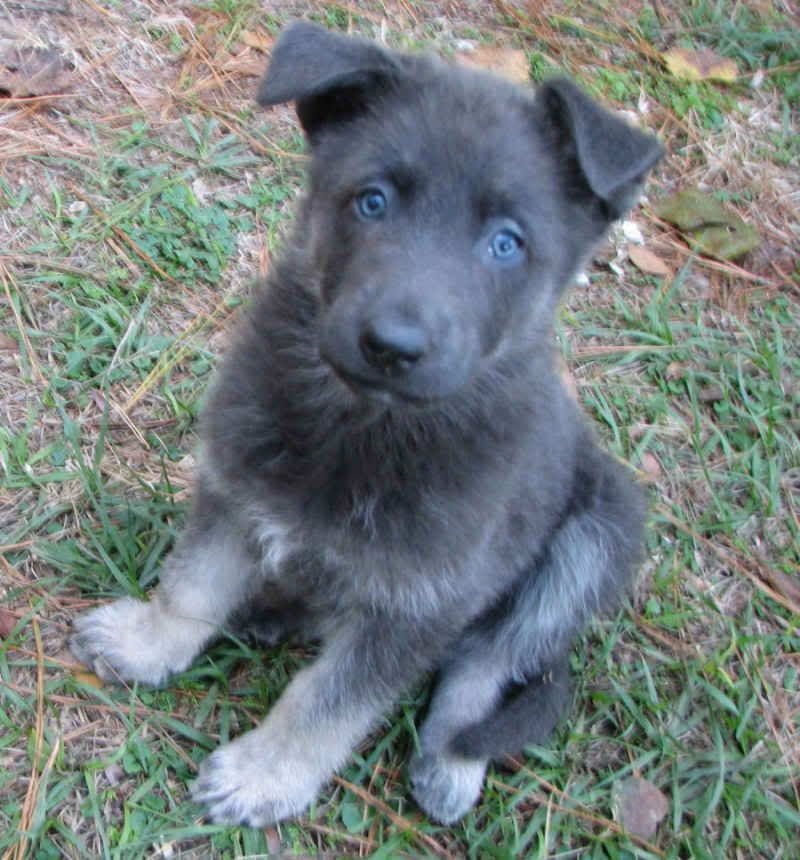Few dogs command attention like the Blue German Shepherd—a striking variation of the classic breed, draped in a silvery-gray coat that shimmers like moonlight. But beyond their arresting appearance lies a loyal, intelligent companion. Let’s unravel what makes this breed extraordinary, from its genetics to its guardian instincts.

What is a Blue German Shepherd?
The Blue German Shepherd isn’t a separate breed but a color variant caused by a recessive dilution gene (the d locus). This gene softens the traditional black and tan pigmentation into shades of slate or steel blue.
While the American Kennel Club recognizes German Shepherds in various colors, blue remains rare and isn’t eligible for conformation shows—yet its popularity soars among enthusiasts seeking uniqueness.
Blue German Shepherd vs. Regular German Shepherd: Key Differences
| Trait | Blue German Shepherd | Regular German Shepherd |
|---|---|---|
| Color | Steel blue, silver-gray | Classic black and tan, sable |
| Genetics | Recessive dilution gene (dd) | Dominant pigmentation genes |
| Popularity | Rare, niche demand | Widely popular, show-approved |
| Price | 1,500–1,500–3,500+ | 800–800–2,000 |
| Temperament | Identical: loyal, alert, trainable | Same as Blue variant |
Are Blue German Shepherds Good Family Dogs?
Absolutely. Their temperament mirrors standard German Shepherds: fiercely loyal, protective, and adaptable. They thrive in active households and bond deeply with children when socialized early. However, their high energy and intelligence demand mental stimulation—think puzzle toys or agility training.
Health Issues: Myths and Realities
While some claim the dilution gene causes health problems, no conclusive evidence links the blue coat to specific disorders. That said, Blue German Shepherds share breed-wide risks:
- Hip/Elbow Dysplasia: Common in large breeds. Opt for breeders who test parents for joint health.
- Bloat: Feed smaller meals and avoid exercise after eating.
- Skin Sensitivity: Their unique coat may require gentle shampoos.
Regular vet check-ups and a balanced diet are non-negotiable.
Training Tips: Unlocking Their Potential
Blue German Shepherds excel in obedience, search-and-rescue, and even service roles. Use these strategies:
- Positive Reinforcement: Reward-based training builds trust.
- Early Socialization: Expose puppies to diverse environments.
- Job Assignments: Channel their drive with tasks like fetching mail or scent work.
For specialized guidance, explore Kikopup’s training tutorials.
Finding Blue German Shepherd Puppies: A Buyer’s Guide
Securing a Blue German Shepherd puppy requires patience, research, and a keen eye for ethical breeding practices. Unlike standard German Shepherds, the blue variant’s rarity demands extra diligence to avoid scams or unhealthy lineage. Here’s how to navigate the process like a pro.
1. Start With Reputable Breeders
Not all breeders prioritize health over aesthetics. Focus on those registered with organizations like the American Kennel Club Marketplace or the United Schutzhund Clubs of America, which emphasize breed standards and genetic testing.
Red Flags to Avoid:
- Breeders who only highlight coat color in marketing.
- No transparency about parentage or health clearances.
- Pressure to pay upfront without meeting puppies.
- Multiple litters available year-round (a sign of puppy mills).
Green Flags:
Lifetime support guarantees for puppies.
Breeders who ask you questions about your lifestyle and readiness.
Willingness to share veterinary records and genetic test results.
2. Verify Health Clearances
The blue coat itself isn’t linked to health issues, but irresponsible breeding can amplify breed-wide risks. Insist on documentation for:
| Test | Purpose |
|---|---|
| OFA Hip/Elbow Evaluations | Rules out dysplasia, a common joint issue. |
| Degenerative Myelopathy (DM) | Screens for progressive spinal cord disease. |
| Thyroid Panel | Checks for hormonal imbalances. |
| Cardiac Exam | Ensures heart health. |
Reputable breeders will publicly share results on the Orthopedic Foundation for Animals (OFA) database.
3. Prepare for the Wait
Blue German Shepherds aren’t mass-produced. Waitlists can span 6–12 months, but this ensures litters are planned thoughtfully. Use this time to:
- Puppy-proof your home.
- Connect with trainers (see IAABC-certified professionals).
- Stock up on breed-specific supplies: durable chew toys, a premium diet, and a grooming kit.
Final Tip: Trust Your Instincts
If a deal feels rushed or too good to be true, walk away. Ethical breeders prioritize the dogs’ welfare over profit and will welcome your scrutiny.
Blue German Shepherd with Blue Eyes

A few parent dogs with blue eyes are indebted to their eye color for a regressive gene that should be inherited.
Blue-eyed Blue German Shepherds may have two blue eyes or they may have odd eyes with one blue eye and one brown eye.
Dogs with odd eyes are sometimes characterized by heterochromia.
Many dog owners consider blue-eyed German Shepherds to be attractive, breeders misunderstand it, and deliberately do not raise blue-eyed dogs.
Similarly, AKC disqualified blue-eyed Blue German Shepherds from dog shows.
“Why Are Blue German Shepherds So Rare?”
The dilution gene is recessive, requiring both parents to carry it. Many breeders avoid prioritizing color to maintain genetic diversity, making blues a serendipitous surprise rather than a standard offering.
Are blue German shepherds aggressive?
No, blue German Shepherds are not considered aggressive as long as they are properly trained and socialized in childhood.
Unfortunately, it is a common misconception that German Shepherds are aggressive because they are often associated with police and military dogs, which act aggressively when prompted.
This causes some German Shepherds to associate with aggressive behavior, but not for long.
German Shepherds are very easy to train and you can teach them commands like ‘quiet’ and ‘recall’ to make sure you are in control of your Blue GSD that starts displaying aggressive signs.
Final Thoughts: Is a Blue German Shepherd Right for You?
This breed isn’t just a pretty face—it’s a commitment to 10–14 years of active partnership. If you’re ready for marathon training sessions, endless games of fetch, and a loyal shadow, a Blue German Shepherd might be your perfect match.

